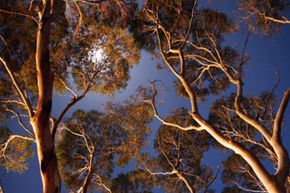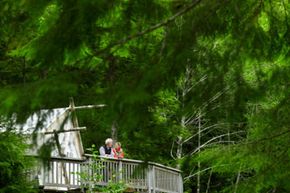You wake up in the middle of pitch-black night in the great outdoors, only something's different -- specifically, the wind picks up and your bed begins to sway in a way that's both comforting and unnerving. Suddenly you remember it: You're suspended 70 feet (21 meters) in the air from a tree. "Yes, that's right," you think. "A thin sheet of nylon is the only thing between me and a fatal fall to the forest floor." Instead of panicking, you look up and remember why you wanted to sleep here in the first place: From the highest branches of a tree, the silvery swath of stars above seems almost close enough to touch. Comforted, you close your eyes and let the breeze gently rock you back to sleep.
The idea of sleeping in a tree is certainly nothing new. Books like Johann David Wyss's "The Swiss Family Robinson" (1812) and Edgar Rice Burroughs "Tarzan of the Apes" (1912) romanticize life in the forest canopy and continue to capture the young imaginations of backyard tree house builders around the world. And in fact, tree dwelling isn't just a product of fictional literature or children's playtime. The Kombai, an isolated tribe living in the forests of Indonesia's Papua region, have slept in trees for centuries. They build tree houses high above the jungle floor to escape heat and mosquitoes and to protect themselves from floodwaters and hostile neighbors [source: BBC].
Advertisement
And nowadays, camping out in a tree has become a form of recreation for thrill-seekers. Some are tree climbers catching some Zs in specially-designed hammocks while others are vacationers curling up in cozy treetop suites. But all are looking to take their snoozing to a higher level.

